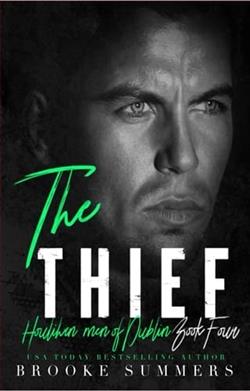Page 11 of Murder in the Family
CUT TO: Interior as before, Guy.
NICK VINCENT (Producer) – off
So now its 2023 and it’s been nearly twenty years since all this happened. Why are you revisiting it now?
GUY HOWARD
Because I want to know the truth. Because that’s what I do, as a film-maker.
And because my family has lived with this thing hanging over our heads for almost two decades and until someone finds out who did it and puts him away none of us will ever have any peace.
NICK VINCENT (Producer) – off
I believe your mother is also unwell?
GUY HOWARD
(nods)
She’s been diagnosed with early onset dementia. She’s only 60. This case – Luke’s murder – it’s destroyed the whole family, but my mother most of all.
NICK VINCENT (Producer) – off
So this film – you want to vindicate her? Is that why you’re doing it?
GUY HOWARD
I want to find the truth.
(pause)
Whatever that truth turns out to be.
MONTAGE: shots of the Campden Hill area. Four-storey brick and stucco frontages with railings along the pavement, tall windows with wrought-iron balconies, trees, wisteria. Expensive cars parked in the street, mothers pushing buggies, dogs.
VOICEOVER – narrator
And the search for the truth starts here.
It’s probably the most expensive part of London you’ve never heard of. This isn’t Mayfair, or Belgravia, or South Kensington. It isn’t even Chelsea. It’s Campden Hill, London W8. The smash-hit ’90s film starring Hugh Grant and Julia Roberts catapulted neighbouring Notting Hill to international fame, but Campden Hill and its elegant, leafy surroundings still remained largely anonymous, much to the relief of its super-rich and super-private residents.
These days, $10 million will barely buy you an apartment in W8, and one of these Victorian villas could easily hit double that. But this house –thishouse is in a league of its own.
Cut to drone FOOTAGE over Dorney Place showing the size of the plot and extent of the garden.
When Dorney Place was built, way back in the 1760s, this area wasn’t even part of London. In fact, it was barely even part of a village. There was an old Jacobean mansion, Campden House, which gave its name to the area before going up in smoke in 1862, and a scatter of smaller buildings around it, but that was about it.
Voiceover continues over IMAGE of old Campden House, followed by camera panning over 1810 map of London showing Kensington and Knightsbridge as villages.
If you walked up Campden Hill back then you’d be surrounded by green fields, and the chimneys and steeples of ‘London’ would be just a distant blur.
IMAGE of Dorney Place in the early 1900s.
Dorney Place didn’t start out with that name; it didn’t even start out as one house.
Some time in the mid 1850s two adjoining cottages were knocked together into one much largerhouse, and the new owner started ‘developing’ it, adding new wings, an orangery and a stable block, and by the end of the century it had become a very desirable gentleman’s residence.
MONTAGE: Sequence of Victorian-era photographs of the house: people in summer clothes having tea, playing tennis; exterior shots of front elevation, courtyard, various interior shots including drawing-room, entrance hall, morning room.















